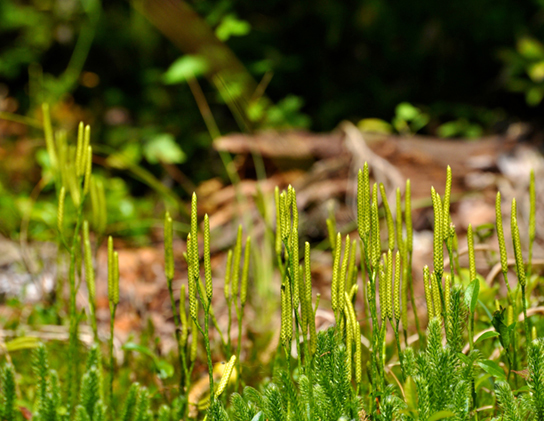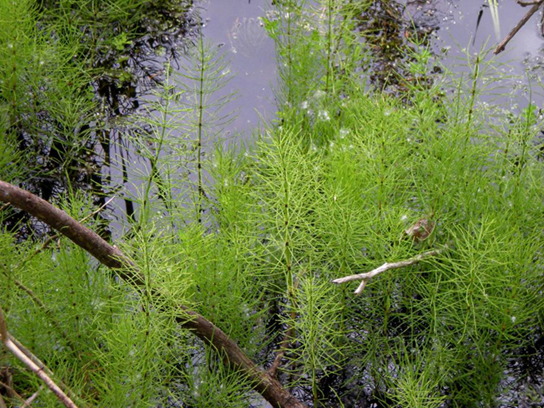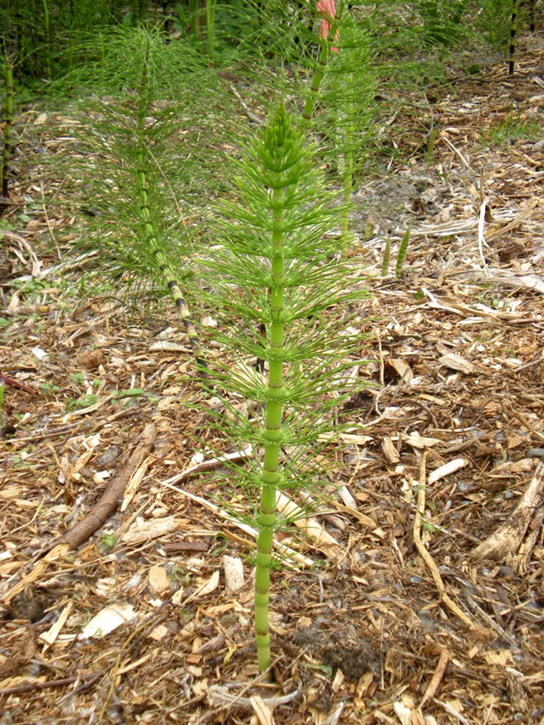| << Chapter < Page | Chapter >> Page > |
By the late Devonian period, plants had evolved vascular tissue, well-defined leaves, and root systems. With these advantages, plants increased in height and size. During the Carboniferous period, swamp forests of club mosses and horsetails—some specimens reaching heights of more than 30 m (100 ft)—covered most of the land. These forests gave rise to the extensive coal deposits that gave the Carboniferous its name. In seedless vascular plants, the sporophyte became the dominant phase of the lifecycle.
Water is still required for fertilization of seedless vascular plants, and most favor a moist environment. Modern-day seedless tracheophytes include club mosses, horsetails, ferns, and whisk ferns.
The club mosses , or phylum Lycopodiophyta , are the earliest group of seedless vascular plants. They dominated the landscape of the Carboniferous, growing into tall trees and forming large swamp forests. Today’s club mosses are diminutive, evergreen plants consisting of a stem (which may be branched) and microphylls ( [link] ). The phylum Lycopodiophyta consists of close to 1,200 species, including the quillworts ( Isoetales ), the club mosses ( Lycopodiales ), and spike mosses ( Selaginellales ), none of which are true mosses or bryophytes.
Lycophytes follow the pattern of alternation of generations seen in the bryophytes, except that the sporophyte is the major stage of the lifecycle. The gametophytes do not depend on the sporophyte for nutrients. Some gametophytes develop underground and form mycorrhizal associations with fungi. In club mosses, the sporophyte gives rise to sporophylls arranged in strobili, cone-like structures that give the class its name. Lycophytes can be homosporous or heterosporous.

Horsetails, whisk ferns and ferns belong to the phylum Monilophyta, with horsetails placed in the Class Equisetopsida. The single genus Equisetum is the survivor of a large group of plants, known as Arthrophyta, which produced large trees and entire swamp forests in the Carboniferous. The plants are usually found in damp environments and marshes ( [link] ).

The stem of a horsetail is characterized by the presence of joints or nodes, hence the name Arthrophyta (arthro- = "joint"; -phyta = "plant"). Leaves and branches come out as whorls from the evenly spaced joints. The needle-shaped leaves do not contribute greatly to photosynthesis, the majority of which takes place in the green stem ( [link] ).

Silica collects in the epidermal cells, contributing to the stiffness of horsetail plants. Underground stems known as rhizomes anchor the plants to the ground. Modern-day horsetails are homosporous and produce bisexual gametophytes.

Notification Switch
Would you like to follow the 'Biology' conversation and receive update notifications?